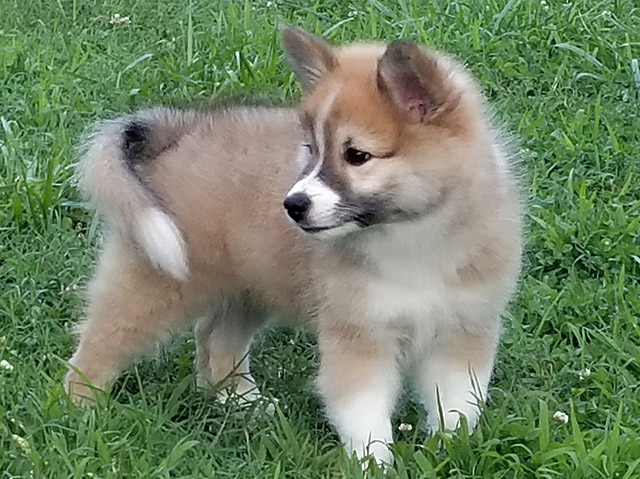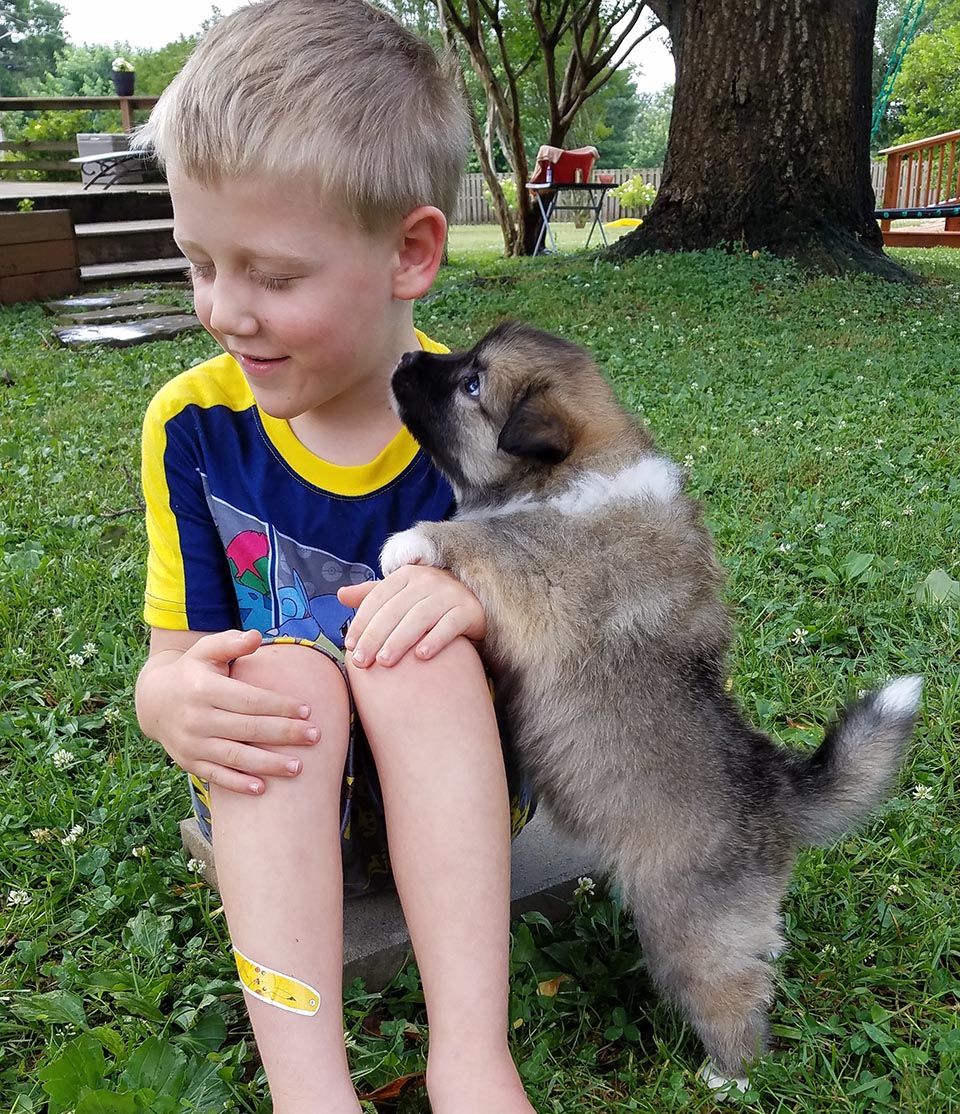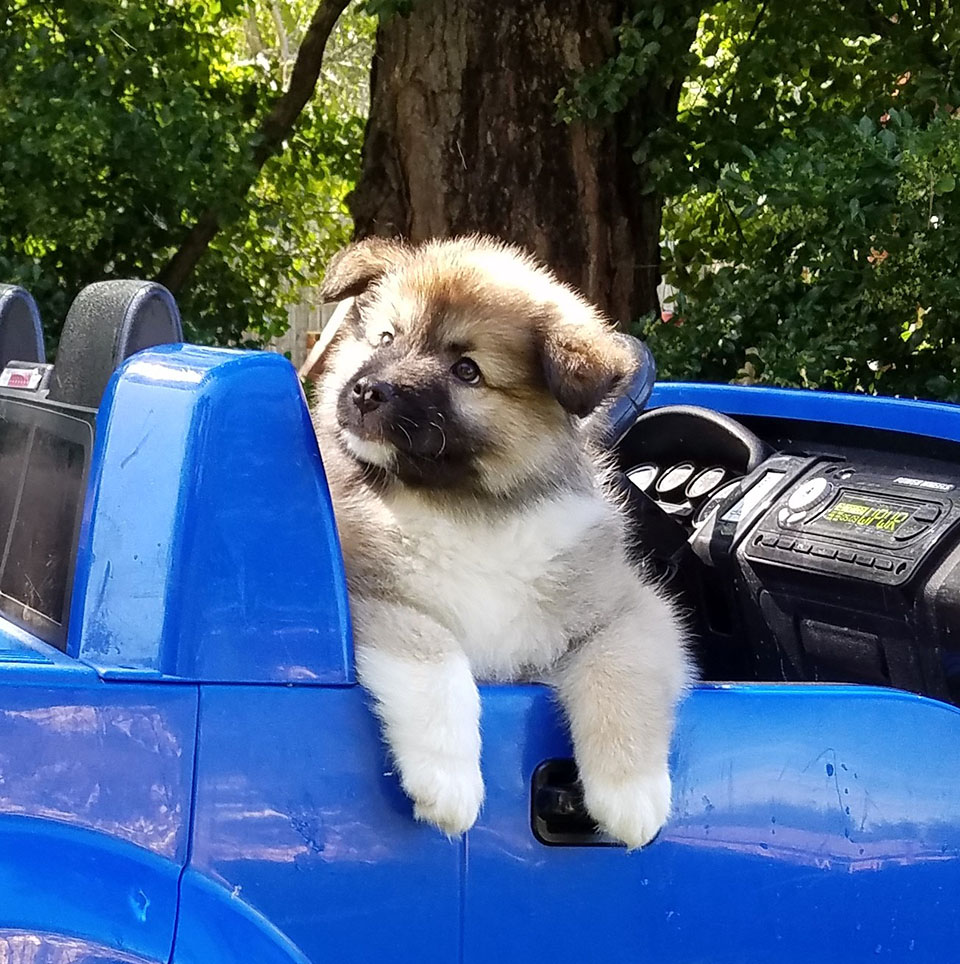The Benefits of Obtaining Your Companion Puppy
from a “Show” Breeder
To begin, let’s define what I mean by a “show” breeder. A “show” breeder is simply someone who participates often and successfully in American Kennel Club (AKC) Conformation competition, and will have both Champion and/or Grand Champion titles on most of their dogs.
When you are trying to find the right breeder, and looking for a reputable, responsible and ethical source for your new companion puppy, there are a great number of advantages in obtaining your puppy from a “show” breeder!
In the search for a wonderful companion puppy for your home, looking for that special puppy who will be a well-loved pet and a member of the family for many happy years, the question has been asked many times “I don’t want to show my dog, so why should I get my puppy from a “show” breeder?”

When a reputable “show” breeder has a litter, usually one or two puppies in a litter may go on to compete in the conformation ring. All the other lovely puppies will be place in companion homes, to become wonderful family pets. That means that MOST puppies from a “show” breeder are placed in companion homes, where they will be loved family members and likely never see the inside of a show ring. This does not mean that those companion puppies are “lesser” in any way … quite the contrary! Normally puppies from ”show” litters, where the breeder-source has been carefully breeding to the AKC Standard, are healthier, sounder in both movement and structure, and more typical in appearance, size, and temperament. Every puppy in that litter, whether destined to be a show prospect or a companion puppy, benefits greatly from the careful breeding, loving care, health screening, socialization and background research that the responsible conformation breeder puts into every litter.
So the question is: Specifically, if you are not looking for a show dog, but do want a healthy, loving companion, how does obtaining your puppy from a “show” breeder benefit YOU?
TEMPERAMENT
Temperament is JOB #1. Having a stable, sweet, typical Icelandic Sheepdog temperament is not optional, it is ESSENTIAL. Temperament is the foundation upon which every truly extraordinary dog rests.
Two things go into establishing the wonderful, typical Icelandic Sheepdog temperament . . .
First, NATURE … the genetics of breeding only those dogs whose temperaments are stable, sweet, affectionate, outgoing, and friendly. It makes no difference if a dog looks stunningly beautiful, or how many awards or titles a dog wins … I will ONLY breed dogs with stellar temperaments. Why? Simple: Because no matter what we do with our dogs, first and foremost they are our companions, and we have to live with them every day.
Secondly, NURTURE. Raising a lovely, happy, friendly puppy is a vitally important activity. It takes time, care, effort, work, and lots of love. Socialization is an essential key in raising a well-adjusted puppy! To understand my philosophy on this, please read my website article: The Importance of Socialization.

Genetic background and environmental influence both play extremely important roles in shaping puppy temperament, and conformation competition brings that temperament into focus. When your puppy is asked to walk calmly through a huge arena filled with literally thousands of dogs and people, they are immediately confronted with noise, activity, and a host of new sights and or sounds. Our puppies are asked to be calm and accepting in this hectic scene, and on top of that, to be friendly and happy with strangers who want to meet and handle them. Their temperament is tested in the “show” environment in a way that immediately and plainly reveals any strengths or weaknesses, so that breeders know without question when a puppy’s temperament is stable and sound.
In conformation competition every judge evaluates the temperament of each Icelandic Sheepdog entered, measuring it against the AKC Standard, which states: “The Icelandic Sheepdog is by nature very alert and will always give visitors an enthusiastic welcome without being aggressive. … The Icelandic Sheepdog is cheerful, friendly, inquisitive, playful and unafraid. A confident and lively bearing is typical for this dog.”
This happy, outgoing, and amiable attitude is necessary if a dog has the true and typical Icelandic Sheepdog temperament. Icies are good-natured and affectionate, and should never be shy, fearful, or aggressive in any way toward dogs or people. A dog that does not exhibit the correct Icelandic temperament will be excused from the show ring and disqualified.
The sire and dam of every “show” breeder’s litter has been temperament tested in the most challenging conditions, and evaluated by many experienced judges to be typical for the breed. Those sires and dams, proven to have the typical outstanding Icelandic temperament, will pass that trait on to their puppies. What could be more important than this, when looking for an Icelandic puppy as a new family member?
HEALTH, STRUCTURE and MOVEMENT
Perhaps you’ve heard that “purebred dogs are some of the unhealthiest dogs out there”. This statement is misleading, but there is also a grain of truth in it. Most puppy mills or backyard breeders claim to produce purebred dogs, and the puppies they sell may be registered by the AKC. Those dogs may indeed be unhealthy, and atypical for their breed. No one evaluates their dogs, and you have only their word to take on their ethics or breeding practices. Remember, also, that the AKC is simply a registry service, and used alone is not an indicator of health, responsible ethics, or careful breeding.
REPUTABLE breeders cannot be lumped in the same pile as disreputable sources like puppy mills or backyard breeders, and the puppies that reputable, responsible breeders produce look different and act different. They stand, move, and mature differently than puppies from questionable sources.
Please read the article on my website: How To Find A Reputable Breeder, for information and tips on locating a reputable, ethical breeder-source for your new puppy.
Needless to say, a reputable breeder should always have completed extensive health screenings on every dog they breed, to ensure that their puppies will not be affected by genetic health issues. A great many puppies from disreputable sources have inherited structural problems which stem from extremely poor breeding practices. Spinal deformities, joint problems, and structural faults can be mild or severe, from slight to crippling. Hip dysplasia, for example, can be severe enough to warrant expensive hip-replacement surgery or serious enough for euthanasia. There is nothing more heart-breaking than having to put down an otherwise healthy, loved family pet because they cannot walk or run without terrible pain.
Other less acute conditions, like cow hocks or spinal curvature may not take the life of your dog, but they will absolutely affect your dog’s ability to move. Healthy, structurally sound dogs should be able to walk, trot, and run freely, without pain! Dogs like the Icelandic Sheepdog are by nature physically active. They were bred for generations to be able to perform physical tasks, and to move about freely for extended periods of time. Their structure and movement is intended to be athletic, easy, and a joy to watch.
In conformation competition the judge evaluates the structure and movement of every dog entered, and measures it against the AKC Standard for the Icelandic Sheepdog. According to the AKC Standard for the Icelandic Sheepdog, their body should be “rectangular and strong”. Both fore and hind legs should be “straight, parallel and strong’’. Their chest should be “long, deep, and well-sprung”. The Standard goes on to list many specifics that characterize strong, muscular, and solid body structure.
As far as movement, the AKC Standard states that the Icelandic Sheepdog “displays agility and endurance with good driving action covering the ground effortlessly”.
A judge’s evaluation of a dog’s structure and movement is not an “optional” or “side” item. For an AKC judge, this is of primary importance, and is at the very core of every AKC judge’s assignment.
This strong, straight, solid body structure, along with smooth and effortless movement is vital for any Icelandic Sheepdog to exhibit the true physical agility, endurance, and movement that these dogs were bred for. A dog that exhibits incorrect structure and unsound movement will be penalized severely in the show ring, if not disqualified entirely.
The sire and dam of every “show” breeder’s litter has been evaluated for correct structure and movement by several different judges on multiple occasions and deemed to be correct and typical for the breed. Those sires and dams proven to have sound physical structure and the free, easy movement of strong, healthy, active Icelandic Sheepdogs will pass on those attributes to their puppies. This is of paramount importance to a family looking for a healthy, active companion.
APPEARANCE and SIZE
For many years I worked as a Breeder Referral source for the Southeastern U.S. Region, and in that time I heard one particular complaint repeated over and over: “My dog doesn’t LOOK like the breed he is supposed to be!” When you see photos on the AKC website, or watch videos of dogs at the Westminster Kennel Club Show, or view correct, typical examples of a breed in person or in a book, you are looking at dogs bred to their breed’s AKC Standard. I cannot emphasize this point enough!
Most people looking for a particular breed care about whether their dog looks and acts like that respective breed. If you adopt a solid black Labrador Retriever puppy, you don’t expect your puppy to grow a long, spotted coat. If you want a friendly family dog like a Keeshond, then aggressive or hostile behavior will never fit into your home and could be dangerous to children or other pets. According to the AKC Standard for their breed, Pomeranians should weigh between 3 and 7 pounds, so when a family adopts a Pomeranian puppy that matures into a 25 pound dog they can be understandably dismayed and disappointed. This is why each breed’s AKC Standard was written and adopted.
The written “Standard” for every breed was developed over many years, established by the American Kennel Club working together with that breed’s parent club. Each breed, from Great Danes to Chihuahuas, has its own separate written Standard, the “blueprint” which tells us in very specific language what each breed should look like, what it should act like, how it should move, and what size it should be. A Bulldog should in no way resemble a Poodle, or a Golden Retriever, or a Collie. Each breed should be instantly recognizable by its appearance, size, color, coat, and temperament.
Puppies from questionable sources like puppy mills or backyard breeders VERY often do not resemble their breed in appearance, size, or temperament. Many dubious sources frequently insist that their puppies are a “rare” size, color, or type, none of which is recognized by the American Kennel Club. Again, you are simply asked to “take their word” for it, with no outside evaluation protocols.

This is where “show” breeders take precedence … they breed every sire, every dam, every litter, and every puppy with the AKC Standard for their breed in mind. That Standard is the blueprint that a reputable “show” breeder follows without fail.
A seriously oversized or undersized dog, a dog with the wrong coat or color for its breed, or a dog with an incorrect temperament … all these are penalized severely in the dog show ring, if not disqualified outright. The sire and dam of every “show” breeder’s litter has been through the rigorous examinations of many experienced judges, and their appearance and size have been evaluated as typical and correct for their breed, according to the AKC Standard.
An Icelandic Sheepdog should look like an Icelandic Sheepdog, act like an Icelandic Sheepdog, and move like an Icelandic Sheepdog. What could be better?
CONCLUSION
In conclusion, when you obtain your lovely companion puppy from a “show” breeder, you are benefiting from all the time, care, research, health testing, training, observation, and evaluation that goes into breeding every litter they produce. When the sire and dam of that breeder’s upcoming litter have their Champion or Grand Champion titles, you don’t have to “take the breeder’s word” for anything … since many impartial, educated, experienced judges have evaluated their dogs and judged them based on the AKC Standard for the breed. You can see for yourself whether they are typical, sound representatives of their breed.
The question I posed at the beginning of this article was, Specifically, if you are not looking for a show dog, but do want a healthy, loving companion, how does obtaining your puppy from a “show” breeder benefit YOU?
The answer? It benefits you in your puppy’s:
TEMPERAMENT, HEALTH, STRUCTURE, MOVEMENT, APPEARANCE, and SIZE
Why would you ever choose differently?

